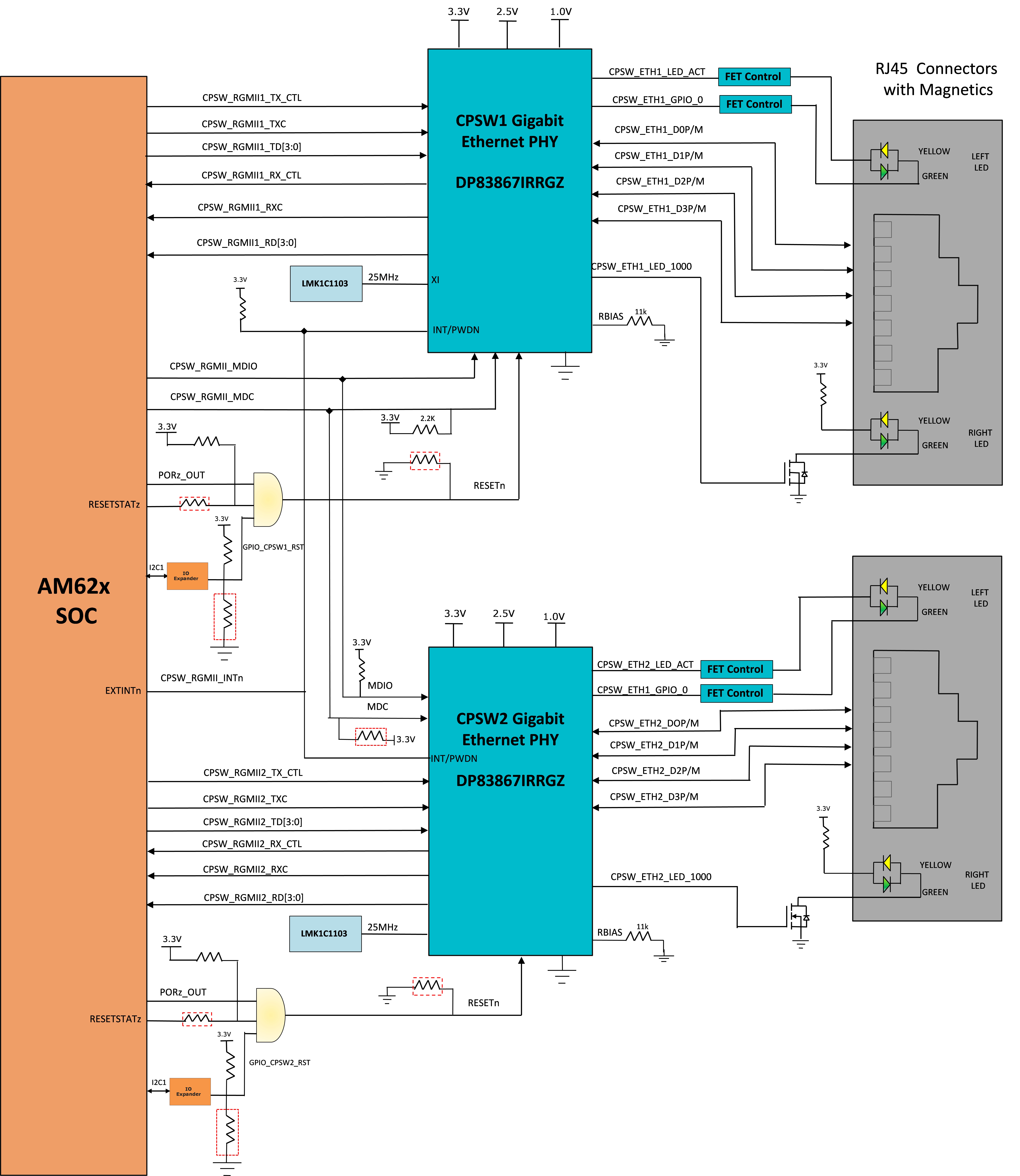SPRUJ40C may 2022 – may 2023
- 1
- Abstract
- Trademarks
- 1EVM Revisions and Assembly Variants
-
2System Description
- 2.1 Key Features
- 2.2 Functional Block Diagram (SK-AM62 and SK-AM62B)
- 2.3 Functional Block Diagram (SK-AM62-P1 and SK-AM62B-P1)
- 2.4 AM62x SKEVM Interface Mapping
- 2.5 Power ON/OFF Procedures
- 2.6
Peripheral and Major Component
Description
- 2.6.1 Clocking
- 2.6.2 Reset
- 2.6.3 OLDI Display Interface
- 2.6.4 CSI Interface
- 2.6.5 Audio Codec Interface
- 2.6.6 HDMI Display Interface
- 2.6.7 JTAG Interface
- 2.6.8 Test Automation Header
- 2.6.9 UART Interface
- 2.6.10 USB Interface
- 2.6.11 Memory Interfaces
- 2.6.12 Ethernet Interface
- 2.6.13 GPIO Port Expander
- 2.6.14 GPIO Mapping
- 2.6.15 Power
- 2.6.16 AM62x SKEVM User Setup/Configuration
- 2.6.17 Expansion Headers
- 2.6.18 Interrupt
- 2.6.19 I2C Address Mapping
-
3Known Issues and Modifications
- 3.1 Issue 1 - HDMI/DSS Incorrect Colors on E1
- 3.2 Issue 2 - J9 and J10 Header Alignment on E1
- 3.3 Issue 3 - USB Boot descoped on E1
- 3.4 Issue 4 - OLDI Connector Orientation and Pinout
- 3.5 Issue 5 - Bluetooth descoped on E2 EVMs
- 3.6 Issue 6 - Ethernet PHY CLK Skew Default Strapping Changes
- 3.7 Issue 7 - TEST_POWERDOWN changes
- 3.8 Issue 8 - MMC1_SDCD spurious interrupts
- 3.9 Issue 9 - PD Controller I2C2 IRQ Not Pinned Out
- 3.10 Issue 10 - INA Current Monitor Adress Changes
- 3.11 Issue 11 - Test Automation I2C Buffer Changes
- Regulatory Compliance
- Revision History
2.6.12 Ethernet Interface
The AM62x SKEVM offers two Ethernet Ports of 1 Gigabit Speed for external Communication. Two channels of RGMII Gigabit Ethernet CPSW Ports from AM62x SoC are connected to separate Gigabit Ethernet PHY Transceivers DP83867, which are finally terminated on two RJ45 connectors with integrated magnetics.
The 48pin version of the PHY DP83867 is configured to advertise 1-Gb operation with the internal delay set to accommodate the internal delay inside the AM62x. CPSW_RGMII1 and CPSW_RGMII2 Ports share a common MDIO Bus to communicate with the external PHY Transceiver.
Two Single port RJ45 Connectors Mfr Part# LPJG16314A4NL from Link-PP are used on the board for Ethernet 10/100/1G Connectivity. RJ45 Connectors have integrated magnetics and LEDs for indicating 1000BASE-T link as well as receive or transmit Activity.
IO supply to the Ethernet PHY is set 3.3V IO level.
